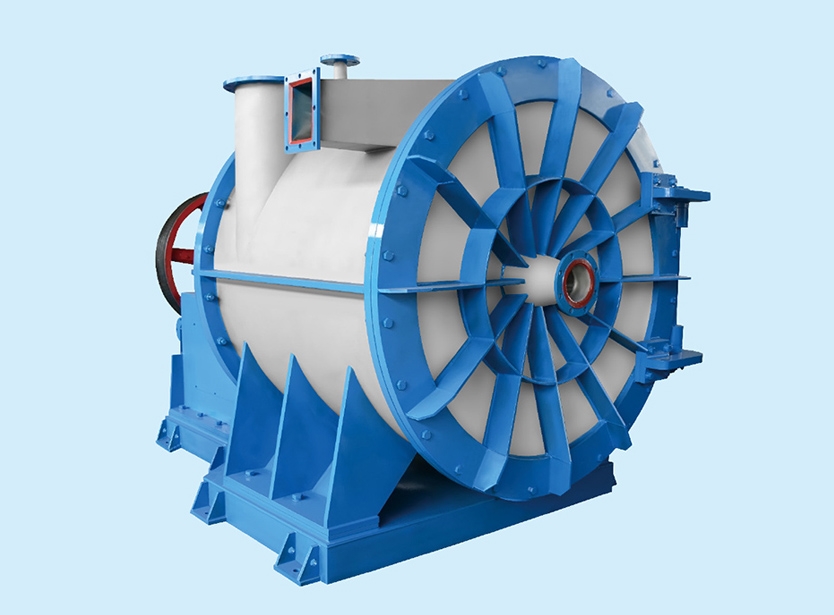In the waste paper processing flow of the papermaking industry, the fiber separator is a key equipment to realize efficient defibering of waste paper and ensure pulp quality. The pulp treated by the hydraulic pulper still has undispersed small paper sheets. If conventional beating equipment is used to defiber waste paper pulp, not only the power consumption is high and the equipment utilization rate is low, but also the pulp strength will decrease due to the re-cutting of fibers. The fiber separator can disperse fibers fully without cutting them, and has become a widely used waste paper defibering equipment at present.
Classification of Fiber Separators
According to the differences in structure and function, fiber separators are mainly divided into two types: single-effect fiber separators and compound fiber separators.
Single-effect Fiber Separator: Ingenious Structure, Clear Function
The single-effect fiber separator has an ingenious structural design (as shown in the working diagram of Figure 5-17). Its working principle is as follows: the pulp is pumped into the small-diameter end of the conical shell from above along the tangential direction. When the impeller rotates, the blades also have the pumping function, making the pulp produce axial circulation and strong turbulent circulation. In the gap between the impeller rim and the bottom knife, and between the impeller and the screen plate, the pulp is defibered and separated into fibers.
- Good Pulp Separation: The fixed separation bottom knife on the periphery of the impeller not only promotes fiber separation, but also generates turbulence to scour the screen holes, and the good pulp is finally sent out from the screen holes on the back of the impeller.
- Impurity Removal: Light impurities such as plastic films are concentrated at the axis due to the eddy current effect, and are discharged regularly from the central outlet of the front cover together with a small part of the mixed pulp; heavy impurities are subjected to centrifugal force and enter the slag discharge port below the large-diameter end along the inner wall spiral line to be discharged.
In terms of operation control, the opening time of the light impurity discharge valve needs to be adjusted according to the content of light impurities in the waste paper fiber raw material. Generally, the automatic control discharges once every 10-40s, each time for 2-5s; heavy impurities are discharged once every 2h. Through precise discharge control, it can fully separate fibers while avoiding breaking light impurities such as plastics, and quickly restore separation balance, finally realizing the separation and purification of fibers.
With its unique structural design and operation mechanism, the fiber separator shows significant advantages in the waste paper defibering process. It not only solves the disadvantages of conventional beating equipment, but also efficiently completes the tasks of fiber dispersion and impurity separation, laying a solid foundation for improving the quality of waste paper pulp and ensuring papermaking production efficiency. It is one of the indispensable core equipments in the waste paper processing flow of modern papermaking industry.
Post time: Sep-24-2025


